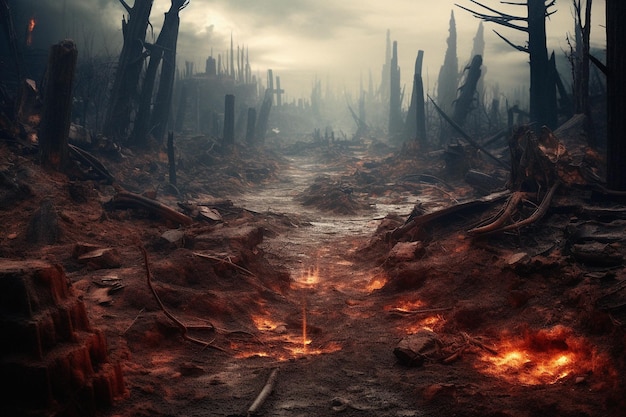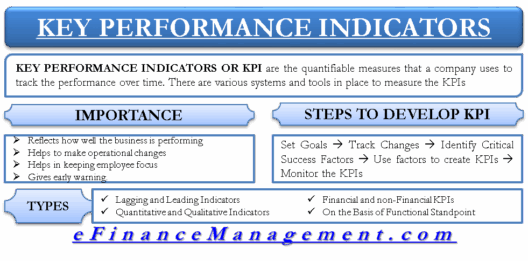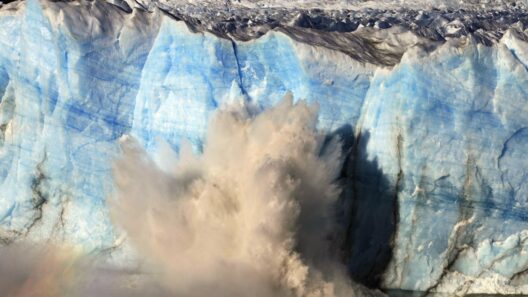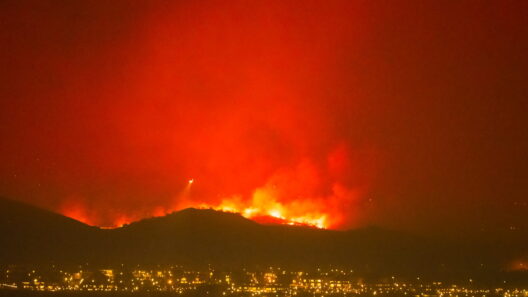In the intricate tapestry of Earth’s ecosystems, a delicate balance has sustained life for millennia. However, as we traverse deeper into the 21st century, this equilibrium is increasingly disrupted. The insatiable thirst for fossil fuels, rampant deforestation, and reckless industrialization have culminated in a perilous phenomenon known as global warming. This atmospheric disturbance not only heightens average temperatures but also ignites a cascade of extreme weather events that challenge our comprehension. Could humanity’s actions inadvertently provoke nature’s wrath? What happens when the natural world, pushed to its limits, decides to fight back?
The connection between global warming and extreme disasters is both direct and insidious. As average temperatures rise, the frequency and intensity of various environmental calamities escalate. Heatwaves, droughts, hurricanes, and floods are no longer rare occurrences but rather a recurring motif in the narrative of our changing climate. With each passing year, the evidentiary link strengthens, painting a grim portrait of our planetary future.
To understand this phenomenon, we must first delve into the mechanics of climate change. Global warming primarily stems from the greenhouse effect, a process where gases like carbon dioxide and methane trap heat in the atmosphere. These gases are predominantly released through human activities such as burning fossil fuels for energy, deforestation for agriculture, and waste management. As atmospheric temperatures rise, the atmosphere can hold more moisture, leading to a paradoxical increase in both droughts and flooding. The landscape becomes a battleground, first scorched by the sun and then inundated by torrential rains.
Consider the devastating hurricanes that have been clawing at coastlines with alarming ferocity. Warmer ocean waters serve as a catalyst for these storms, allowing them to develop into colossal forces of nature. For example, Hurricane Katrina in 2005 and Hurricane Maria in 2017 wreaked havoc, causing catastrophic destruction and loss of life. The tragedies instigated by these events prompt a crucial examination: Are we prepared to confront nature’s counteroffensive against our neglect?
Even more insidious are wildfires, which have ravaged vast swathes of forest land in recent years. The phenomenon’s escalation is elegantly tied to climate change; prolonged periods of drought create desiccated landscapes ripe for combustion. The 2020 Australian bushfires and the California wildfires exemplify how climate change can amplify natural disasters, leading to loss of biodiversity, habitat destruction, and air quality deterioration. Joni Mitchell once noted that we “don’t know what we’ve got ’til it’s gone.” Are we waiting until it is too late to cherish the irreplaceable ecosystems being consumed by flames?
Flooding is yet another manifestation of nature’s response to our disregard for its ecological rhythms. As intense rainfall events become more common, the impact on urban infrastructure grows increasingly pronounced. Cities like Houston, with its labyrinth of drainage systems, have experienced unprecedented floods that paralyze daily life and disrupt economic activities. The cost of disasters spirals, burdening taxpayers and stoking the fires of social inequality as vulnerable communities often bear the brunt. How can we reconcile our urban development with the capriciousness of nature, which is now taking ancestral lands back?
Every natural disaster carries with it not just immediate destruction but also long-lasting socio-economic repercussions. Communities are torn apart, economies crippled, and resources strained. The vulnerable, often disenfranchised populations, face the steepest hill to climb in rebuilding their lives. In the wake of such turmoil, the question that looms is profound: Is humanity equipped to mend the damages done to the planet before it retaliates further?
In addition to the measurable impacts of disasters, psychological effects arise from living in a continuously unstable environment. The physiological toll of witnessing repeated calamities can precipitate a collective mental health crisis. Anxiety, trauma, and despair become intertwined into the fabric of daily existence for those living in threatened regions. It begs reflection: How do we foster a resilient spirit in communities feeling the tremors of climate chaos?
Amidst this climate crisis, it is essential not to remain passive observers but to engage in robust discourse and action. International entities, governments, and grassroots organizations must collaboratively formulate strategies to mitigate these extremes while fostering a sustainable future. The dialogue must focus not only on adaptation strategies but also on bold policy changes in emission reductions, renewable energy investments, and conservation efforts.
To encourage a proactive stance, individuals can take deliberate steps toward reducing their carbon footprint. Simple yet effective actions such as embracing public transportation, reducing meat consumption, and supporting local, sustainable businesses contribute to a collective movement that challenges the status quo. Every small effort can coalesce into larger systemic change. Are you willing to enter this fray and alter your daily habits in the pursuit of climate justice?
Ultimately, when nature fights back, it serves as a stark reminder of our interconnectedness with the Earth. The unraveling we witness today is not merely a consequence of our actions but a clarion call to reevaluate our relationship with the planet. The path forward requires courage, innovation, and collaboration. Let us not be mere spectators in this battle but active participants in its resolution. The future may still be written in the ink of our choices today, and it is high time we pen a narrative of resilience and respect for the natural world that sustains us.








